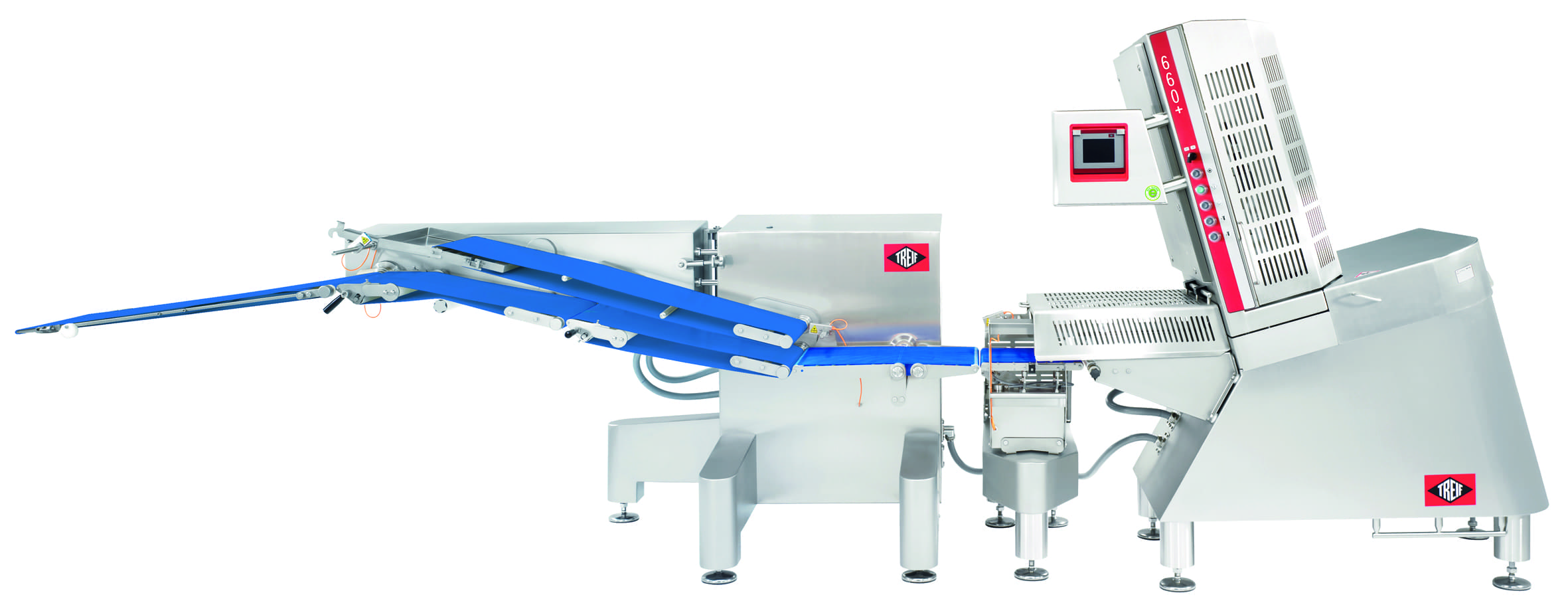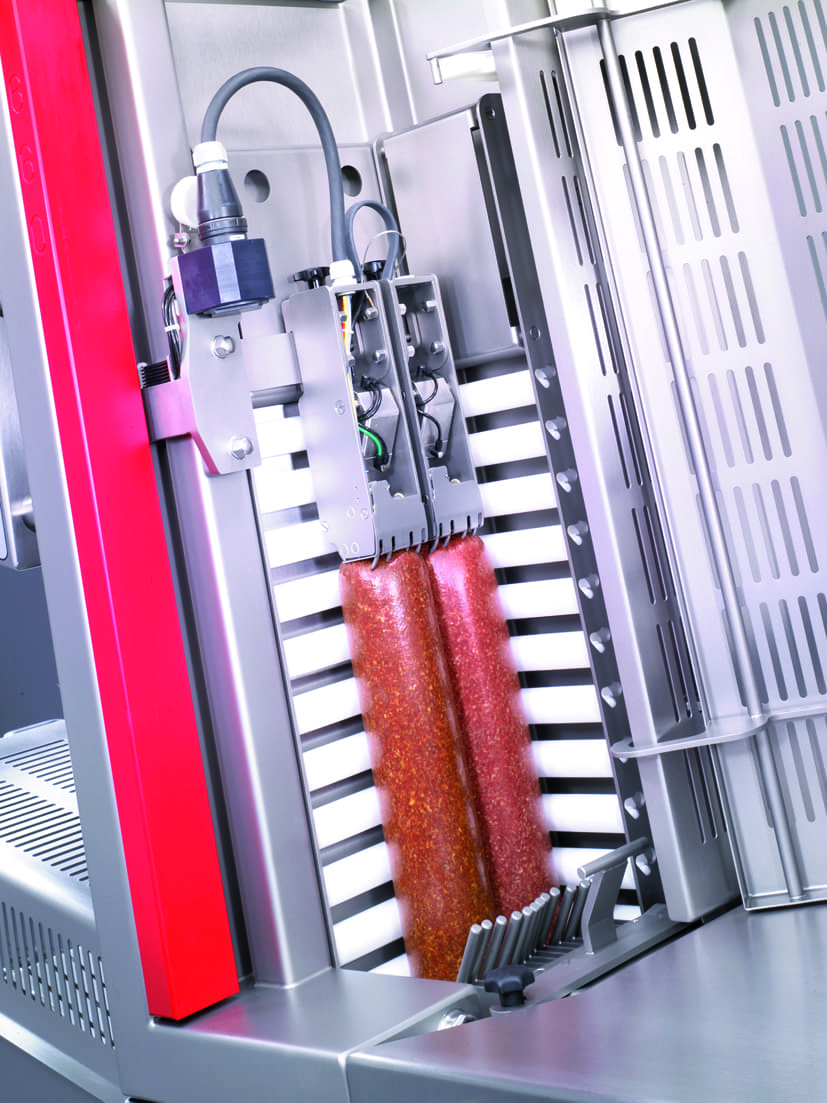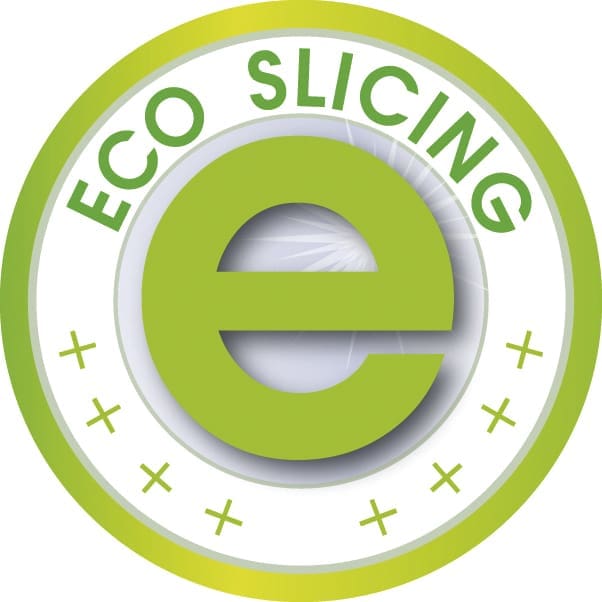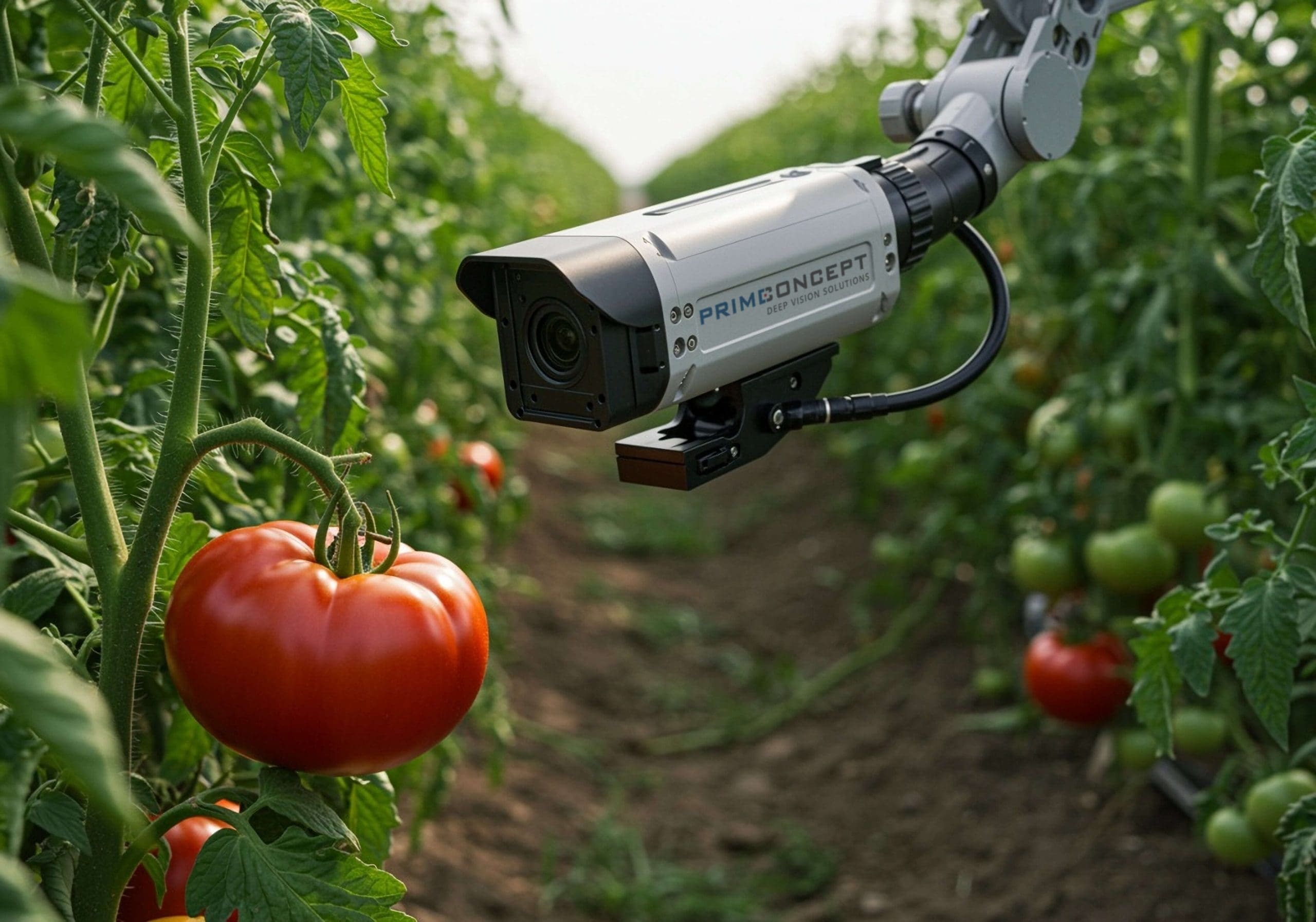Considering energy costs for slicing
 Attractive presentation of the goods, packages with precise weight, high yield, automation, flexibility – these are only a few of many important criteria for slicing. And then there are the central properties which all cutting machines – not only slicers – should have. These include capacity, easy operation, very good hygiene conditions and easy cleaning.
Attractive presentation of the goods, packages with precise weight, high yield, automation, flexibility – these are only a few of many important criteria for slicing. And then there are the central properties which all cutting machines – not only slicers – should have. These include capacity, easy operation, very good hygiene conditions and easy cleaning.
What sounds simple and plausible in theory cannot always be implemented completely and directly during the actual slicing process. Certain processes are commonly used in the industry to achieve the desired cutting results. Many meat processing companies, for example, cool products such as bologna or similar boiled sausage before cutting to stabilise the product. Cooling the product, however, always means additional logistics and time. This can slow down the production process or make it less smooth. One known problem is that cooled products which are ready for cutting can defrost as soon as slicing starts so that the cooling cannot achieve the desired effect. Cooling also incurs additional costs.
For some time, TREIF slicers have been equipped with a technology which allows products to be cut warmer, i.e. at a higher product temperature. This is made possible by continuous cutting which means without so-called blank cuts. Other slicer systems require blank cuts of the blades to gain time for removing the cut and placed product. That means the blade rotates without cutting any product.
TREIF slicers remove the finished stacks during cutting of the next product. The cutting process is carried out continuously without blank cuts. The same capacity is achieved with fewer blade rotations. This is more gentle on the product and slicing is possible at higher, i.e. warmer, product temperatures. This ecological and economic aspect is symbolised by the green ECO SLICING signet. The operating company saves cooling costs and product quality is not affected. After all, freezing a product can change its flavour as well as its appearance and texture.
The option of continuous cutting which is provided by “warmer slicing” is particularly beneficial in combination with the so-called SAS. SAS designates the simultaneous slicing and stacking process and has been used in TREIF slicers since 2001. Slicing and stacking are carried out in one single work step which means the slices cannot drop or slide and are placed neatly and precisely after cutting, e.g. as fans or stacks.
The shaft into which the product is inserted and the positioning belt for stacking the sliced products are installed at a 90° angle. This means the cut surface of the products and the surface of the transport belt are parallel. So when a slice is cut from the product, the front part of the slice is already in contact with the belt while the rear part is still attached to the product. Without SAS, however, the cut slice drops onto the belt and can slide or buckle. The combination of continuous slicing with SAS and the angle of the cutting shaft is an advantage, particularly with difficult to place products, e.g. poultry or soft, sticky products (such as vegetarian meats).
The sickle blade with Lotus engraving is another important contribution to precise placement. Many companies know the problem that even though cutting is precise, the slices then stick to the blade. The non-stick effect of the engraving causes the slice to separate from the blade. The engraving creates a narrow air cushion to provide the non-stick effect. TREIF has had the Lotus engraving patented.
Blades with Lotus engraving are manufactured at the TREIF in-house production workshop for stainless steel blades. Regular grinding is important for the blade as dull blades could distort the cutting result. At TREIF, the toothing is not only ground off but also precisely recreated in a sophisticated process. The special grinding device HS 380 is available for customers who want to grind their blades in-house. It allows grinding and deburring in one step. TREIF is the only manufacturer of slicers to use sickle blades already in the smallest slicer category.
While the blade is the “heart” of the machine, the role of the other components should not be underestimated. For example, it is vital that the product is fixed securely during slicing. Anyone supplying sliced goods to customers knows that especially soft products such as cooked ham, cooked sausage, cheese or tofu tend to “break away” from the gripper system.
The patented TREIF vacuum gripper fixes the products securely during cutting. The vacuum is not only applied on one, but on two different chambers. This 2 chamber system provides double safety. The patented vacuum gripper is a closed system with a “static vacuum” which – contrary to other systems – does not create a permanent vacuum. This means that small parts and product fluids are not introduced into a hose system. The gripper is easy to clean. It can be dismantled in a few steps and then cleaned on a fixture.
Just as the blade with Lotus engraving, the vacuum gripper is available for all TREIF slicers. The slicer range includes everything from entry level models to high performance industrial slicers which can be expanded in a modular system. Different extension modules are available, e.g. transverse sorters or a flip flop belt and even fully automated solutions. The DIVIDER 660+, for example, can “grow” along with the size of the company. The TREIF DIVIDER 660+ slicer combines optimum use of space with the kind of performance that could be expected from a much larger machine. When changing between products, no mechanical conversion is required. The slicer can be used for shingling, stacking (up to 100 mm), staggering or shaving the products. With a generously-proportioned infeed chamber measuring 320 x 130 mm, the DIVIDER 660+ is suitable for a wide range of possible applications. For example, it can be used for slicing products with a diameter of 100 mm in 3 rows.
At the final expansion stage, the machine is equipped with a smart feeder which automatically feeds the stacks into the packaging machine. Omitting manual contact with the products improves the hygiene conditions and saves manpower.
The smart tray feeder can easily be combined with any packaging machine on the market. State-of-the-art software allows the slicer and the deep drawing machine to be perfectly synchronised with each other.
TREIF`s slicer technology will always reflect the trends and developments on the market, especially the trends of the consumers´behaviour concerning food. Current example: TREIF has found line solutions for the industrial sandwich production. These are now used by renowned sandwich manufacturers in Switzerland, France, the UK and the US.
[youtube https://www.youtube.com/watch?v=6E7u-NtQjn0]








